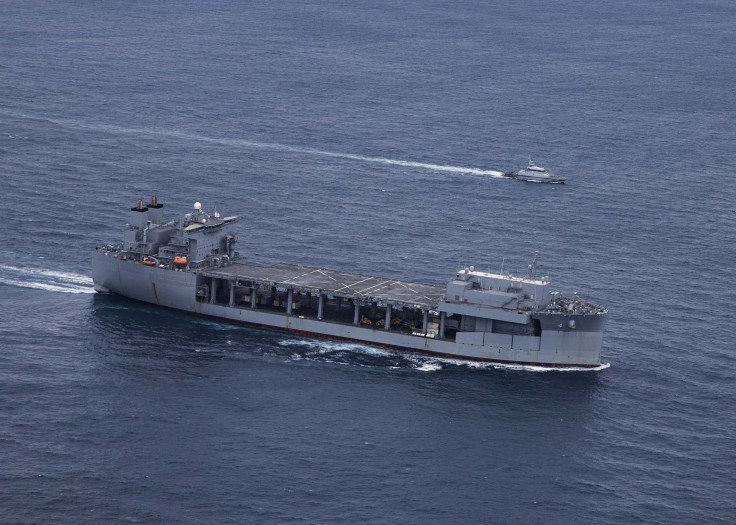Navy's Expeditionary Sea Bases Could Soon Turn Into Motherships For Drones
With aerial and underwater drones set to become the centerpiece of warfare in the coming decades, the U.S. is looking to achieve significant modifications to its Expeditionary Sea Bases (ESB), which could make the class of ships a mothership for Naval drones.
Having proposed changes to ESB vessel design at the Sea Air Space Symposium in 2022, the National Steel and Shipbuilding Company (NASSCO), the company behind the project, has highlighted the modifications at the recently-concluded Surface Navy Association National Symposium, the War Zone reported.
Along with the introduction of a new unmanned underwater vehicles (UUV) launch-and-recovery system (LARS), the company is also proposing an aft flight deck to support unmanned aerial vehicle (UAV) operations and accommodate F-35B fighter jets under certain scenarios, the War Zone report added.
Similar to the Expeditionary Transfer Dock (ESD), the ESB vessels are a class of highly flexible ships used for a wide range of different military operations. As part of the critical access infrastructure during the conflict, these vessels are capable of deploying forces along with equipment and supplies, according to the Navy's fact file.
With a four-spot flight deck, mission deck and hangar facilities, the ESBs are optimized to support a variety of maritime-based missions, including Special Operations Forces (SOF) and Airborne Mine Countermeasures (AMCM).
Designed and constructed by NASSCO, a division of General Dynamics, the ship's configuration is based on the Alaska class crude oil carrier. This ensures that the ship has design stability along with lower development costs.
Considering its size, deck area and room for growth, the War Zone points out that these ships are remarkably inexpensive when compared to "keel-up" warship designs.
While the ESB fleet is already used to support various smaller underwater and aerial drones in a limited capacity, the new potential modifications are expected to significantly expand these existing capabilities, the report says. For instance, changes to the UUV bay will particularly focus on recovering and launching larger types of underwater drones, like the Boeing-built Orca Extra Large Unmanned Undersea Vehicle (XLUUV).
While China has rapidly advanced its capabilities to operate submarine drones, delays and cost overruns continue to plague the U.S.' plan to deploy the Orca drone submarines. With rapid developments in the use of unmanned technologies, the Navy is faced with the challenge of figuring out how to launch, recover and forward deploy these larger UUVs.
Also, part of the plan is the proposed aft flight deck modification intended for UAVs to turn ESBs into drone motherships. As reported in December 2022, China has been experimenting with a catamaran-modeled mini-carrier for drones to operate as a mothership for its aerial drones.
Although the company has not pitched the ESBs as primary F-35B operation platforms, the War Zone points out that the flight deck of the ship could be modified to allow the transport of F-35Bs over long distances with the launch of regular stories possible under specific conditions.
Currently, the Navy's operational fleet of ESB class is made up of four commissioned ships that include USS Lewis B. Puller (ESB 3), USS Hershel "Woody" Williams (ESB 4), USNS Miguel Keith (ESB 5), and USS John L. Canley (ESB 6). With NASSCO awarding contracts for two more vessels, the class of vessels is set to grow to six ships.

© Copyright IBTimes 2024. All rights reserved.






















